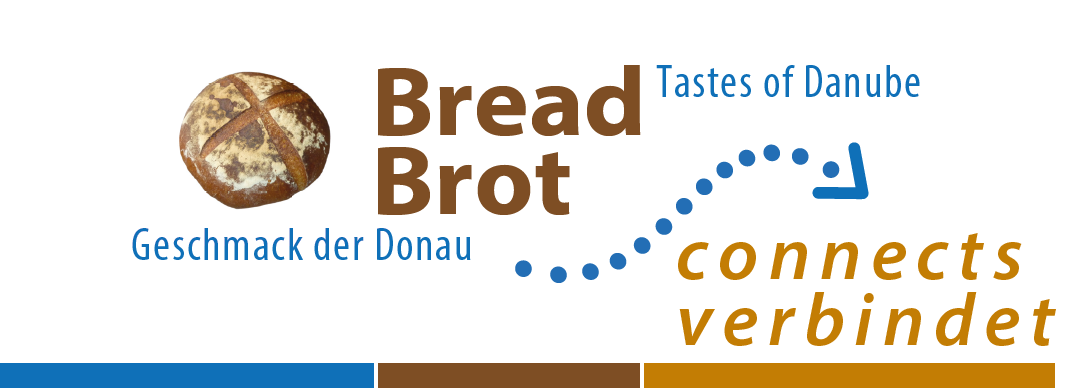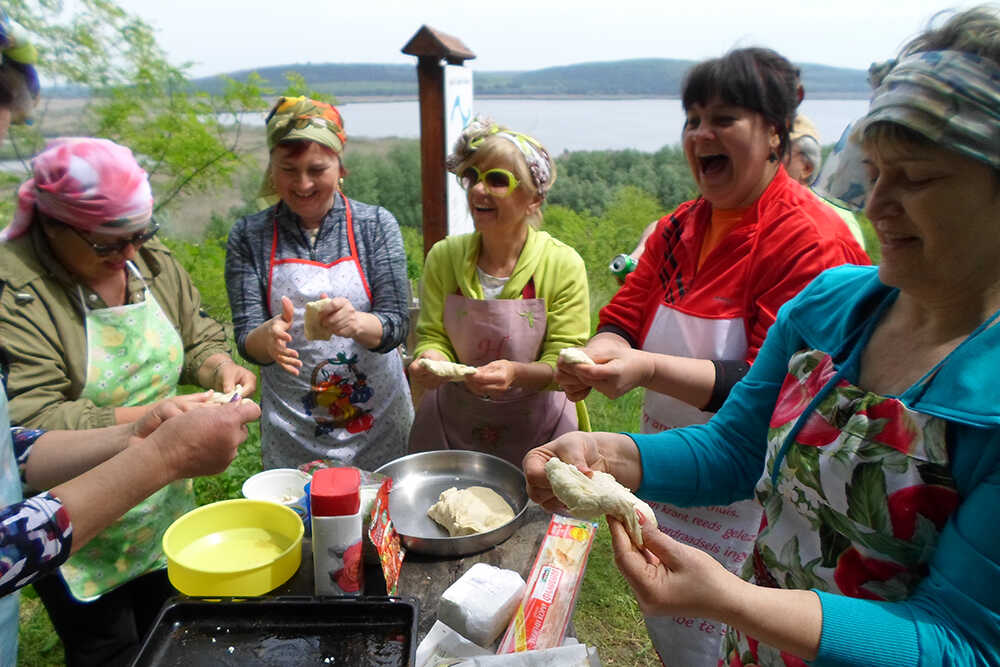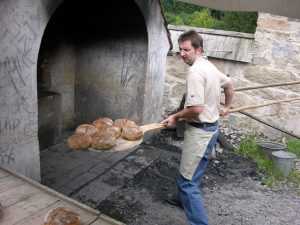In Romania, bread is almost entirely produced in big baking companies. Many of these baking houses have been taken over by foreign enterprises. There are home-grown bakeries producing bread based on traditional methods, but the machines and baking ovens are imported. Harvesting wheat and spelt has become a monopoly of the big enterprises so that procuring grains is now problematic. Many bakeries are forced to buy flour abroad, particularly in Hungary.
In Banat, the bakeries deliver bread to the villages. In winter, the delivery is smaller because most people bake at home. There are hardly any baking houses or ovens for the communities. Bread is mostly baked with yeast; for the traditional method, sour dough is used (“Maia” in Romanian).
For centuries, people in Transylvania have baked bread in the same traditional way using big brick-lined ovens for 12-15 breads of 3kgs each. The smell and taste are as surprising as the process itself.
In the parish of Birtin near Brad (district of Hunedoara), the brick baking oven is heated up twice a week and bread and apple turnover (Placinta) are baked on order. The grandson even accepts orders on Facebook.
Near Sibiu, in the parish of Alãmor, bread is baked according to the recipe which Mrs. Maria Ranf passes from generation to generation. Without machines, the dough is kneaded by hand, only sour dough (Maia) and baked in a wood-fired oven. She does not buy anything because her son-in-law owns 60 hectares and they grow wheat and corn. Baking takes place from Wednesday night to Saturday. With around 70 breads and other traditional baked goods (Hanklish, Romanian Lichiu), the couple goes to the farmer’s market Transilvania in Sibiu. One bread weighs 2kg and costs around 15 RON (approx. 3€).
Convivium Transilvania at the village of Crit, 25km from Sighisoara, is a Transylvanian culinary academy which – amongst other things – gives access to knowledge and understanding of European culinary traditions and provides solutions for the adaption of the natural and traditional cuisine to today’s standard of living.
One of the oldest elements at the establishment is the bread baking oven, one of the largest in the village. 12 loafs of bread, 3kg each, can be baked in the oven. One of the customs of the parish was to cover the dough with leaves of cabbage before baking so that the loafs take the shape of the leaves and the bread has a better flavour. The academy fosters baking in domestic baking houses or people can join classes and participate actively.
The film “Traditional bread house in Transylvania” (Pâine de casă tradițională din Ardeal) was shot with support of Convivium Transylvania.
In Vestem near Sibiu, Mrs. Baciu bakes once a week, usually on Saturdays. The amount of bread baked depends on the order. People from the village and Sibiu can place orders.
In Hosman, a village in the district of Sibiu with 790 inhabitants, a traditional bakery with a wood-fired oven was opened in 2010 in the front building of the Old Mill. Mrs. Luijza does a lot of manual work so that the traditional recipes result in the best products.
One of Hosman’s baker Luijza’s favourite occupation is to produce bread with skill and diligence using different recipes: “Every moment of my life relates to the village – I work on the field to hay and bake bread. I’ve learnt the baker’s craft from my father who learnt it from my grandfather. It is therefore a handcraft with family tradition and I value it very much.”
The bread is sold on the weekly market on Fridays and on the farmer’s market “Transilvania” in Hosman on Saturdays. Nowadays, there are bread festivals in Transylvania and Moldova where – apart from cultural and musical offers – traditional bread baking is fostered.







































